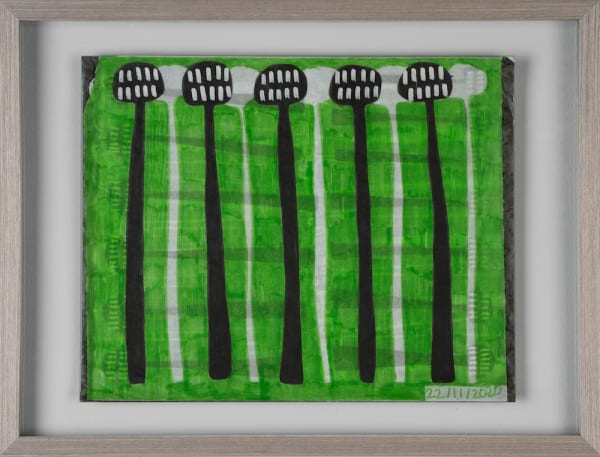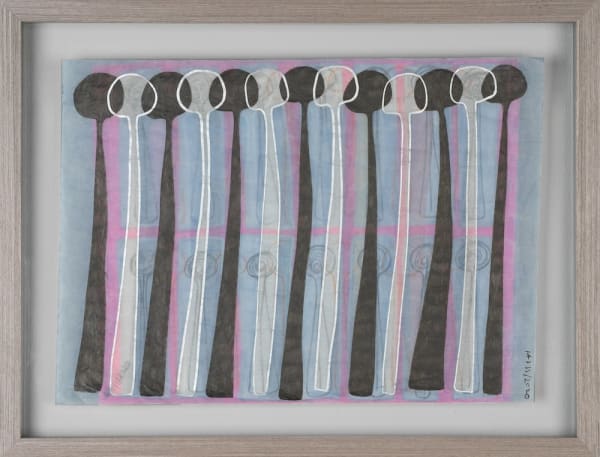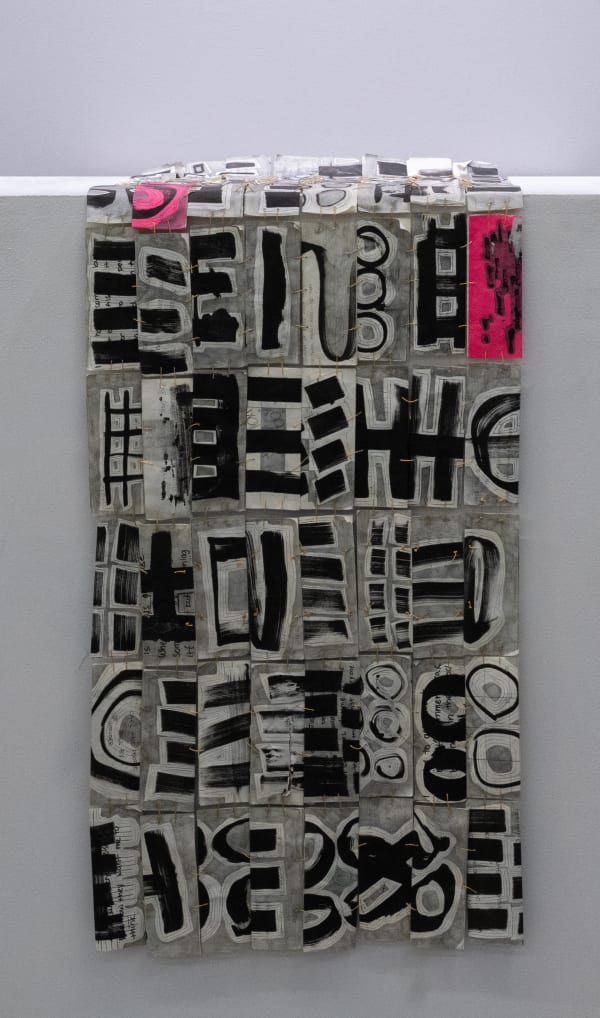-
In this exhibition, the multidisciplinary Emirati artist addresses the effects of waiting by isolating different square-based objects and utensils from their everyday usage and subjecting them to surreal, slightly funny tests of time and multiplicity. In multiple series of works made in ceramics, stitched and compressed paper, and concertinaed books, the artworks highlight the differences that emerge from sameness. Square plates are stacked up, squares form uneven grids, and spoons sit alongside each other in a parody of identical manufacture. For Eman, the repetition of objects speaks not to the purity of mathematics but to the contextual reality of life. By carefully making every work herself, she emphasises individuation and difference in what are ostensibly identical objects.
-
-
Made in ceramics, stitched and compressed paper, and concertinaed books, Eman Al Hashemi's works isolate different objects from their everyday usage, and subject them to slightly surreal, slightly funny tests of time and multiplicity. Square plates are stacked up, rows of sockets sit in queues, spoons sit alongside each other in a parody of identical manufacture. If there are too many to be used, some items must always wait their turn. What happens then? Formerly straight lines droop slightly; right angles bend to 85 degrees; squares of paper mesh together into a soft, then dried pulp. With its anthropomorphism of the “waiting” object, Eman’s work is also marked by a literary conceit and self-awareness that seeps in at the edges. She shows that material properties, environmental conditions, and the boredom – and meditative freedom – of repetition all bear on the making and even reception of a work. If the twentieth century was led by the form of the grid, Eman reminds us that the grid must be formed of something: whether paper, ceramics, fabric, or the time the artist and viewer put in.
-
-
-
-
In Sliding Tablecloth (2018), similarly, she stitched together coloured squares into a fragile, ephemeral tablecloth, like a softer, more magical version of the 20th century’s austere grid.
-
-
-

-
-
The idea of the series – the repetition of identical items – and its geometric counterpart, the grid, were fundamental to the ideas around art in the twentieth century. The theorist Rosalind Krauss elaborated on the subject in her well-known “Grids” in October in 1979, seeing in the form the onset of modernity: an impulse away f rom subjective expression and towards strict, ordered objectivity, in which beauty can be found conceptually, anti-aesthetically, and perhaps joylessly. It’s tempting to read Al Hashemi’s work as the twenty-first century’s response to that essay: her sagging electrical sockets an environmentally degraded idea of progress, her curved paper Aggressive Platters (2020) as grids warped f rom the heat. For Al Hashemi, the repetition of objects speaks not to the purity of mathematics but to the contextual reality of life. By carefully making every work herself, she emphasises individuation and difference in what are ostensibly identical objects.
-

-
-
-
-
-
-
-
-
About the artist:
Press KitEman Al Hashemi (b. Dubai, 1993) is a multidisciplinary artist whose practice revolves around impossible tasks, repetition, productivity, inefficiency, and reimagined objects and shapes through sculpture, prints, drawings, and artist books. Inspired by the ideas surrounding mass production, value, relationships to objects, hoarding, consumerism, and sentimental value, the artist questions what it means for mundane everyday objects, like a brick on the side of the road or a spoon in a drawer, to be idly placed in an environment that focuses on productivity, constant chaos and noise. Her practice is marked by the formalism and interest in materials that emerged over the past five years in the UAE, as artists moved away from found item and Pop idioms and towards studio-based work governed by concepts of perception, investigation into the properties of materials, and geometric principles.
Eman Al Hashemi, 15 September - 29 December 2022
































